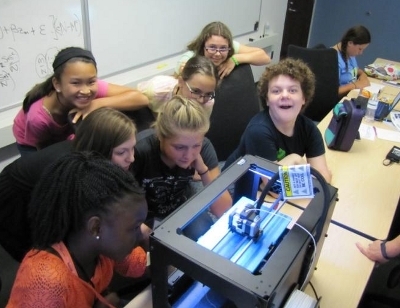
NIMBioS Education Module
3-D Printing Models of Cell Organelles and Flowers
Access to 3D printing has been a growing trend in K-12 schools. This hands-on module features active learning using 3-D printing technology to teach middle school students about physical scientific models and cell organelles. This activity has already proven a success at NIMBioS' "Adventures in STEM Camp" for middle school girls. In this curriculum module, aligned with Next Generation Science Standards, students learn about physical models and how they are used in science, then design and print their own representations of different cell organelles or flowers. This activity follows the 5E instructional model.
Preparation and Materials Needed:
- 3-D Printer and plastic
- Computers with internet connectivity and a browser (1 per pair of students)
- Obtain parental consent, or notify parents of activity for the creation of free student Tinkercad accounts. Review Tinkercad privacy policy for guidance.
- Science & Engineering notebooks (or scrap paper for designs)
- Queued videos
- Examples of 3-D printed models and misprints
- For cell organelles – one page printouts of drawings of cell organelles with short explanations of the functions of the organelle. One per pair of students.
- For flower models – field guides to flowers and/or actual flowers, such as flowers collected from the yard or grocery store. Composite flowers such as daisies work especially well, but other options are just fine to show biodiversity.
Resources
Module plan for teachers: (.docx) (.pdf)
Relevant Middle School Standards
- Next Generation Science Standards (NGSS) Middle School Engineering Design
- NGSS MS-LS1-2. Develop and use a model to describe the function of a cell as a whole and ways parts of cells contribute to the function.
Other NIMBioS education modules
For further information, please contact:
|
Suzanne Lenhart Associate Director for Education and Outreach Email: slenhart@tennessee.edu Ph: (865) 974-4270 (Math) (865) 974-9349 (NIMBioS) Fax: (865) 974-9300 | |
|
NIMBioS, 1122 Volunteer Blvd., Suite 106 University of Tennessee Knoxville, TN 37996-3410 | |
NIMBioS
1122 Volunteer Blvd., Suite 106
University of Tennessee
Knoxville,
TN 37996-3410
PH: (865) 974-9334
FAX: (865) 974-9461
Contact NIMBioS


